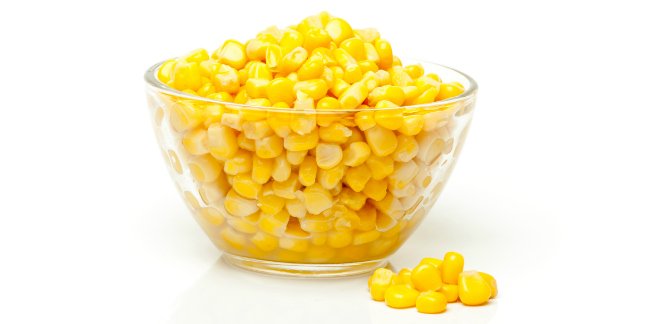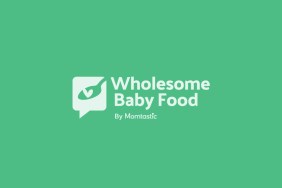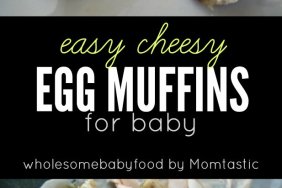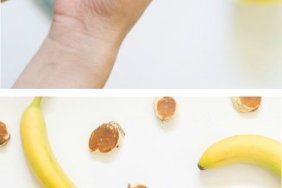Corn in Baby Food Recipes – Learn When your Baby can Have Corn & How to Prepare Corn for Baby
![]()
![]()
Corn can be a great finger food for your baby but corn is probably not the best “meal” type of baby food however.
The Goodness of Corn for Baby Food:
Corn contains a good amount of protein and carbohydrates – making it a great food for energy.
Corn, however, is lacking in many other nutrients. The nutritional value or corn compared to a majority of other vegetables is substandard; save it for later. Another good reason to offer your baby corn later is that it makes a great finger food.
Corn (one cup – cooked)
| VITAMINS:Vitamin A – 392 IU
Vitamin C – 8.2 mg Niacin – 2.5 mg Folate – 0 mcg Pantothenic Acid – 1 mg Vitamin B6 – .2 mg Lutein – 1350 mcg Contains some other vitamins in small amounts. |
MINERALSPotassium – 325 mg
Sodium – 1 mg Calcium – 4 mg Phosphorus – 115 mg Iron – .67 mg Also contains small amounts of selenium, manganese, copper and zinc |
When to introduce Corn to your baby?
Age for Introducing: 8-10 months or 10-12 months
Corn is another one of those confusing food when it comes to baby feeding. Most sources do say that corn is best given after 12 months old. One of the reasons is that corn is a potential high allergen food and another reason is that corn may be a choking hazard. Further, introducing corn after 12 months old, as a finger food, may be more appropriate because an older baby/toddler should be able to properly “chew”/mash the nibblets.
During the first year of baby’s life, it is very important that baby receive all the nutrients possible. Corn is comprised mostly of starchy carbs and is considered an “empty” calorie food for the most part. Waiting to introduce corn in favor of a more nutrient dense food may be a better option. Corn really has very little nutritive value and I think it’s best to leave it for later.
Yet another reason to hold off on corn is that it is particularly difficult to digest and as we all know, it tends to pass through the system in the same form that it went into the system.
Corn derivatives (such as corn flour, syrup, starch etc.) are found in many foods and many infant formulas also contain corn syrups and corn starch. With that being said, there is a vast difference between feeding an infant a “meal” of corn as compared to feeding an infant a food item that may have a corn derivative in the ingredients.
As always, you should thoroughly discuss any feeding issues with your pediatrician as generalities may not apply to your child; this recommendation is very important when you wish to introduce possible high allergen foods to your infant.
How to select and store corn for homemade baby food
 According to the EWG, corn is not one of the “dirty dozen” foods that are most highly contaminated with pesticides – purchasing organic is a personal choice. The one concern with much of the corn grown in the US is that it is GMO; if you are able, purchase non-GMO corn (and any other food that may be GMO such as soy beans or tofu).
According to the EWG, corn is not one of the “dirty dozen” foods that are most highly contaminated with pesticides – purchasing organic is a personal choice. The one concern with much of the corn grown in the US is that it is GMO; if you are able, purchase non-GMO corn (and any other food that may be GMO such as soy beans or tofu).
When buying fresh corn, you should peel back the husks a wee bit to see it the tip of the corn is in good condition. Squeeze the corn and feel for firmness; soft squishy fresh corn is not a good choice.
Store corn in the refrigerator. Corn will keep longer if it is not husked so only husk the corn if you will be using it within 2 days.
The Best Way to Cook Corn
Cooking corn is very simple, remove the husks and toss it into a large pot of boiling water. You may also grill corn (we find this method brings out the best flavor of fresh corn.) You may also “shave” it off the cob and then either steam or boil the corn nibblets. Using frozen corn is also an option, just follow the cooking directions on the package.
A Few Corn Baby Food Recipes
Corn – Basic Purée
Ingredients:
Any amount of fresh corn you desire
Directions:
Step 1: Husk and boil the corn on its cob until tender
Step 2: Shave off corn from the stalk
Step 3: Place into your choice of appliance for pureeing and begin pureeing. Use a sieve if needed to get rid of the hulls from the nibblets.
Step 4: Add water as necessary to achieve a smooth, thin consistency
OR
Step 1: Cook frozen corn (watch for salt) according to package directions
Step 2: Follow Steps 3 and 4
Corn, Apple & Sweet Potato
Ingredients:
- Corn nibblets- about 2 cups
- 1 apple – peeled, cored and diced
- 1 sweet potato – peeled and diced
Directions:
Step 1: Cook the corn using your preferred method
Step 2: Steam until tender – apple and sweet potato
Step 3: Place corn, apple and sweet potato into your choice of appliance for pureeing and begin pureeing. Chop or dice for finger food
Step 4: Add water as necessary to achieve a smooth, thin consistency – you will probably not need to add water as these foods are watery as it is.
Creamy Corn & Cauliflower
Ingredients:
- Corn nibblets- about 2 cups
- 1 cauliflower – washed and chopped, use the florets (visit the cauliflower page for detailed prep method)
- 1 cup whole milk yogurt
- pepper
Directions:
Step 1: Cook the corn using your preferred method
Step 2: Steam th cauliflower florets until tender
Step 3: Once veggies are cooked, allow to cool then transfer in portions to your blender/food processor and puree. Add yogurt and pepper as you puree until you have a creamy consistency.
Makes approximately 3 cups
Foods Good to Mix With Corn for Baby Food:
- Apples
- Carrots
- Green Beans
- Dried Beans
- White Potato
- Peas
- Summer Squash – zucchini or yellow/crooked necked
- Brown Rice
- Lentils
- Chicken
- Beef
- Pork
Resources and Learning More About Corn:
- National Corn Grower’s Assoc.
- BT Corn – Genetically Modified Corn- how it’s being made better
- Corn from wholehealthmd.com
![]() Remember, always consult with your pediatrician regarding introducing solid foods to your baby and specifically discuss any foods that may pose allergy risks for your baby.
Remember, always consult with your pediatrician regarding introducing solid foods to your baby and specifically discuss any foods that may pose allergy risks for your baby.
![]() This site complies with the HONcode standard for trustworthy health information:
This site complies with the HONcode standard for trustworthy health information:
verify here.



